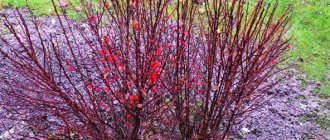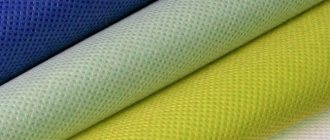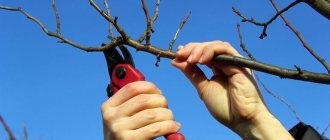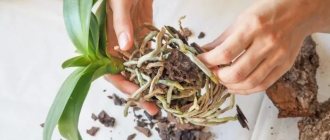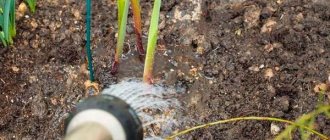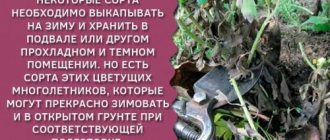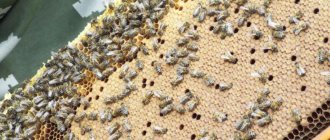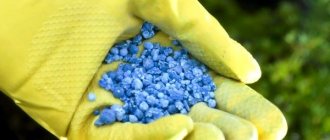The main reasons for the appearance of microorganisms
The cellar is a room that is almost constantly in the dark and damp - these are ideal conditions for the development of unwanted fungus and mold. Microorganism spores spread quickly, affecting more and more areas of the room.
Cellars located in residential buildings pose a particular danger - improper operation can lead to the destruction of the basement floor and the penetration of mold and mildew into the home. The reasons are as follows:
- high humidity;
- lack of sunlight;
- lack of air circulation;
- close location of groundwater;
- poor ventilation;
- insufficient waterproofing.
The release of moisture from stored vegetables is a completely normal process, but as a result, condensation can accumulate on the walls and mold can form. Therefore, periodic treatment of the basement and the use of adsorbents are necessary conditions for proper operation.
Advantages and disadvantages of processing
Even primitive people came up with the idea of storing vegetables and other edible supplies in a deep hole previously dug in the ground. But, in addition to numerous advantages, such a “dungeon” also has disadvantages .
Without high-quality finishing, the room will always be damp, which is fraught with uncontrolled growth of mold .
Excessive rotting of vegetables attracts various insects, which happily feast on potatoes, beets or pumpkins. Only high-quality preparation of the basement will help minimize the likelihood of losing vegetables. In this case, experts have provided several basic recommendations that can help solve the most common problems.
What to do
The cellar should be prepared for use in the summer, in dry weather. Basic steps:
- Empty the basement from last year's products, cans, barrels, boxes, and if possible, disassemble racks and shelves.
- Leave the cellar open to thoroughly ventilate the room using natural ventilation.
- It is recommended to wash all wooden boards with warm soapy water and dry thoroughly in the sun until completely dry.
- Compact the bottom of the basement, having previously cleared it of debris, old sand, and crumbled whitewash.
- Dried boards must be coated with a disinfectant compound. To do this, you can use copper sulfate or lime or a combination of these substances.
- Carefully treat the walls, ceiling and base of the basement using the same composition as for the boards.
- Dry the cellar for two to four weeks after disinfection, and only then place food in it for storage.
Priming of walls and ceilings is usually carried out at the stage of construction of houses with cellars. For this purpose, deep-penetrating compounds are used, which form microscopic crystals in the pores that prevent the harmful development of mold microflora.
But even such powerful and reliable means lose their effectiveness over time. Therefore, the walls, ceiling, metal and wooden elements of the cellar should be treated annually.
Ventilation and drying of the cellar or basement
Preparing the cellar for winter begins with thorough ventilation of the room. Many summer residents consider it necessary to start doing this in the spring, however, this is not recommended, since this time of year is characterized by sudden temperature changes, leading to the formation of condensation on the walls and ceiling, which subsequently turns into mold. It is best to do this in early autumn, which will help avoid excessive moisture on the walls and getting them wet. It will not be superfluous to dry all the equipment in the cellar in the fresh air. It is recommended to dry it in the shade under a canopy, since exposure to bright sunlight on wooden equipment can lead to its deformation. If there are moldy boards on the racks, they resort to cleaning the damaged areas, and the rotten boards are replaced with new ones. Wooden structures in a cellar or basement for storing vegetables and fruits in conditions of high humidity are an ideal environment for fungus and various microorganisms that cause rot and diseases of fruit and vegetable products. That is why, after the drying process, it is necessary to resort to cleaning them with a stiff brush, as well as processing using a blowtorch.
How to prepare a composition from vitriol
Copper sulfate is considered the most popular remedy for combating fungus and mold. It is one of the least harmless and at the same time effectively copes with the disinfection of the room. Preparation of the solution:
- you need to purchase copper sulfate - this is an inexpensive substance in the form of blue crystals;
- vitriol is dissolved in water at the rate of 100-150 g per liter;
- The composition should be coated with walls, boards, metal structures, ceilings, and part of the solution should be poured onto the earthen base so that the vitriol is thoroughly absorbed;
- Allow all surfaces to dry thoroughly, leaving the basement open.
Combined disinfectant
If you prepare a solution containing copper sulfate and lime, you can get a more effective composition against fungus and mold. You need to take 1 kg of slaked lime, 100 g of copper sulfate and water. First, vitriol is diluted, lime is diluted separately, after which the two solutions are carefully combined, mixing thoroughly. Work in protective gloves - this is a mandatory requirement.
The resulting composition is applied to all surfaces of the basement using a regular brush. Allow the solution to absorb and dry. If there is already mold on the walls, you need to burn it out with a blowtorch before applying the composition.
Products for processing in the cellar
To disinfect surfaces in storage for vegetables, fruits and other winter preparations, it is recommended to use the following compositions:
• vapor product formed during the lime slaking process;
• copper sulfate;
• lime;
• solution of potassium permanganate;
• special pastes containing fluoride;
• sulfur;
• tobacco, etc.
Bordeaux mixture is also popular, which is prepared from slaked lime and copper sulfate (proportions 10:1) with the addition of water. Both components are mixed separately in a small amount of liquid, after which the lime is poured into the vitriol solution in a thin stream.
Using any of the options, you should adhere to the processing rules and not exceed the dosage specified in the instructions. Otherwise, toxic substances will be absorbed into the workpiece. Lime and copper sulfate are considered safer for human health.
You should not waste time and money on treating wood surfaces of the cellar using bitumen, enamel paint, or saline solution as a disinfectant. They are not able to destroy fungus or mold; the appearance of the restored wood will deteriorate after just a couple of months.
Special antiseptics
The market offers a large selection of antiseptics, with the help of which you can avoid the appearance of fungal microflora in basements. When choosing products, you need to pay attention to how safe they are for residential buildings if your cellar is not located in an outbuilding. The product can be used on wet and dry surfaces. You need to carefully read the instructions to determine whether the composition is suitable for wood or cement walls.
If the product is universal for any surface, it can be used to prevent the appearance of mold and mildew. But it will not be possible to eliminate areas of the cellar already affected by microorganisms.
Rules for performing work
Such structures are made from a variety of building materials, but regardless of this, they require periodic maintenance. Periodic disinfection of the cellar is required.
This work consists of drying and removing excess carbon dioxide, which sometimes accumulates below in large quantities, especially if there are a lot of products in the cellar. Many cellar owners do not know how to carry out proper processing; they only know such not very effective means as open fire or checkers (read Checker for the cellar: why is it needed).
In addition to their low effectiveness, such methods are often dangerous to the health of residents.
Nowadays, there are various means for disinfecting basements. There are types of cellar maintenance that bring the greatest benefit and are also safe for human health. Depending on the task at hand, the processing method that is most in demand at the moment is selected.
Mechanical processing methods
If mold has already affected the walls, boards or ceiling, you need to take immediate measures to eliminate it. To do this, in addition to vitriol and lime, you can use the following means:
- Chlorine powder or bleach, which is dissolved in water. You can apply the product with a brush or spray.
- Soda with vinegar. The surface is sprinkled with dry powder and then watered with vinegar. The resulting reaction destroys microorganism spores.
- Table salt with boric acid. To prepare, take 1 kg of salt and 50 g of acid, combine with a liter of water and treat the moldy areas.
- Potassium permanganate solution. The composition is saturated, after which all surfaces of walls, racks and shelves are treated.
- Tobacco decoction. You will need 50 g of dry shag, from which a concentrated decoction is made.
- Iodine solution. To prepare, take 10 ml of five percent iodine per one and a half liters of water. The mold is removed, then the surfaces are sprayed with iodine.
- Sulfur fumigation. An effective but highly toxic disinfection method. Containers with sulfur are placed in the cellars and set on fire, the basements are hermetically sealed. Gas kills mold and destroys fungus.
When using toxic substances, you need to wear protective equipment - gloves, special clothing, respirators. It is believed that once microorganisms appear on wood, it is no longer possible to get rid of them, and all that remains is to burn the tree completely.
Cleaning and disinfection methods
.
Gas in the cellar
A concentration of carbon dioxide in the air of more than 10% is dangerous for humans. If a match does not light up in a room or a candle goes out, then we can confidently assume that there is an excess of carbon dioxide and a lack of oxygen in the air. Carbon dioxide is toxic and can cause suffocation. Having gone down to the cellar, a person does not immediately feel oxygen starvation and may lose consciousness.
Swamp gas accumulating in the cellar is also dangerous. A swamp gas breakthrough is possible if the basement is located in a low-lying swampy area. Swamp gas consists mainly of methane and, when mixed with air, forms an explosive mixture. High concentrations of swamp gas are dangerous, as it has a nerve-paralytic effect.
If gas contamination is detected, the cellar must be urgently ventilated in the most thorough manner. If ventilation does not work well and there is no air circulation, then it must be created artificially. To do this, you can lower a blanket or a sheaf of straw into the cellar on a rope and begin to quickly raise and lower it, thereby creating air movement. Emergency Situations Ministry specialists warn: if there is no ventilation in the cellar, and it has not been visited for a long time, then you cannot go into the room alone. Before going down into the cellar, you need to “stir” the air there with a long stick or broom (like tea in a glass), then open it for an hour to ventilate.
.
Cleaning
All old vegetables left over from last year are pulled out of the cellar. By the end of July, fresh vegetables are already growing in the beds, so last year’s vegetables are thrown away. The cellar is cleaned completely: all the garbage is raked out of it and the remaining sand is removed (to the ground or floor). The boards of the racks and shelves on which jars of pickles and jam were stored are pulled out. They also take out the boards from which the bins for storing potatoes, carrots, etc. were made. All removed boards are washed with warm water, soap and soda, and left to dry in a ventilated area or in the sun. After a week, the boards will dry well and must be treated with a disinfection solution: a 3-5% solution of copper sulfate.
The disinfectant solution is applied to the boards 2-3 times with an interval of 1-2 weeks.
Drying
The cellar is opened wide; if the entrance is equipped with a lattice lid, it is closed. The task is to dry the room thoroughly before disinfection. Dry the cellar for at least one week, and preferably two weeks in dry weather. During this time, the dampness from the cellar will disappear, and mold and mildew will die due to dryness.
Further disinfection of a dry cellar will be more effective in preventing the development of mold than disinfection of a damp room.
Processing agents
Disinfection of the cellar can be carried out using the following means:
- copper sulfate;
- lime;
- lime vapors during its slaking;
- sulfur;
- fluoride-containing pastes;
- potassium permanganate;
- tobacco, etc.
It must be remembered that most of the above products are very harmful to humans and can accumulate in vegetables, which will subsequently be stored in the cellar.
The least harmful disinfectants from all of the above are lime and copper sulfate. These products are also used to treat plantings in the garden.
.
Disinfection
You can get rid of mold and mildew in the cellar in the following ways:
- whitewashing with lime is the most affordable method. A recipe for a composition for disinfecting basements and cellars with your own hands: for 5-6 buckets of water you will need 1 bucket of lime paste. 10% iron or copper sulfate is added to the resulting solution (for 1 bucket of whitewashing composition, 1 kg of sulfate crystals must be dissolved in warm water);
- You can also get your own disinfectant solution by making a strong solution of potassium permanganate or tobacco decoction (50 g of tobacco dust or dry shag per 1 liter of water);
- Another method of disinfection is fumigation with sulfur (sulfur dioxide): pour crocked sulfur onto a baking sheet or frying pan with hot coals at the rate of 30-60 g per 1 m 3 of vegetable storage volume. Then the doors are closed, the cracks are covered with clay dough, and the hatch is sealed (you can cover it with a blanket). After 1-2 days, the cellar is opened and ventilated. The air temperature in the treated room during disinfection with sulfur dioxide should be at least 15-16°C. Fumigation at a lower temperature will not give the desired results. A simpler and more convenient way is to use sulfur bombs (they are sold in stores). To avoid poisoning, after making sure that the sulfur burns well, immediately leave the cellar. Remember: sulfur dioxide is poisonous to both people and animals, therefore disinfection with sulfur dioxide cannot be carried out in cellars and basements located under the garden house;
- When fumigating, observe fire safety measures;
- To independently destroy insects, mold and putrefactive fungi in the cellar and basement, you can use the vapors from extinguishing bleach at the rate of 2-3 kg of quicklime lumps per 10 m3 of storage to be cleaned. The lime is poured into some container, filled with water and immediately left the storage facility. As in the case of sulfur fumigation, the cellar must be carefully closed, sealed and left closed for 1-2 days, and then thoroughly ventilated. The procedure is repeated 2-3 times with an interval of 1 week. Lime fumes are highly toxic, so take maximum precautions;
- areas of structures that are largely affected by fungus are burned out with a gas torch or blowtorch. Alternatively, areas affected by mold are repeatedly lubricated with an antiseptic solution consisting of boric acid and soda: 25 g of boric acid and 75 g of soda per 1 liter of water;
- cleaning the walls of basements and cellars is carried out with a 10% solution of iron or copper sulfate or a solution of potassium alum (3-5%);
- the earthen floor of the cellar (basement) is sprinkled with a layer of fluff lime 1 cm thick;
When carrying out disinfection, all safety precautions must be observed:
- work in protective clothing, shoes, glasses and gloves;
- Wear a gas mask as necessary;
- you can’t eat;
- no smoking;
- strictly follow the rules for using cellar disinfectants;
- After finishing treatment, you must immediately remove protective clothing and wash your face and hands with soap.
The following will not help in the fight against wood-destroying fungi: bitumen, sodium chloride solution, oil paint. These remedies are ineffective and waste time and money.
In order to prevent fungi and mold from infecting a newly constructed cellar, materials from dismantled old houses cannot be reused during its construction. Even if they seem quite strong and uninfected. For the construction of a cellar, you can only use dry, healthy wood, which is recommended to be treated with an antiseptic solution.
Disinfection of the basement, as well as disinfection of the cellar, must be completed no later than 1 month before storing the products in storage.
The video shows the process of slaking lime. Be careful and careful, the process of slaking lime releases a large amount of heat. In this case, the temperature of slaking lime sometimes reaches such values at which not only water boils, but also wood catches fire:
Tweet
Share
{lang: 'ru'}
Additional floor disinfection
Before placing any products in the cellar, the base should be filled with vitriol solution. After drying, the floor is sprinkled with a mixture of sand and lime in a thick layer, approximately a centimeter. The substances absorb moisture well and prevent the formation of condensation.
You can additionally put a small box with lime, which will be an excellent adsorbent, or use expanded clay, perlite and other porous building materials - they are simply scattered on the earthen floor.
After any treatment of the basement, you cannot use the cellar to store food for a month. The work needs to be done in the summer, in June or July, so that the future winter storage room can dry out well.
How to prepare a basement for storing fruits and vegetables?
How to properly prepare a basement for storing a new harvest?
What can you do to make vegetables and fruits last longer?
How to protect yourself from rodents and other pests?
sapient
First of all, the cellar must be thoroughly ventilated to remove all odors. Wipe the shelves with a solution of copper sulfate, or better yet, take them outside, into the sun. If there is fungal rot in the basement, you need to put a bucket with 2 kg of quicklime there, pour water into it and quickly close the cellar. After a day, ventilate the room, and after a couple of weeks, carry out the same procedure again. In order for the future harvest of fruits and vegetables to be stored longer and not be subject to any diseases, the basement should be whitewashed with lime, adding a little bleach to it.
The harvest can be protected from rodents by wild rosemary by spreading its branches on all shelves. And the smell of burnt wool will drive uninvited guests out of the cellar. To do this, you need to cut a tuft of hair from a dog or cat, set it on fire and leave it in a tightly closed basement for a day.
